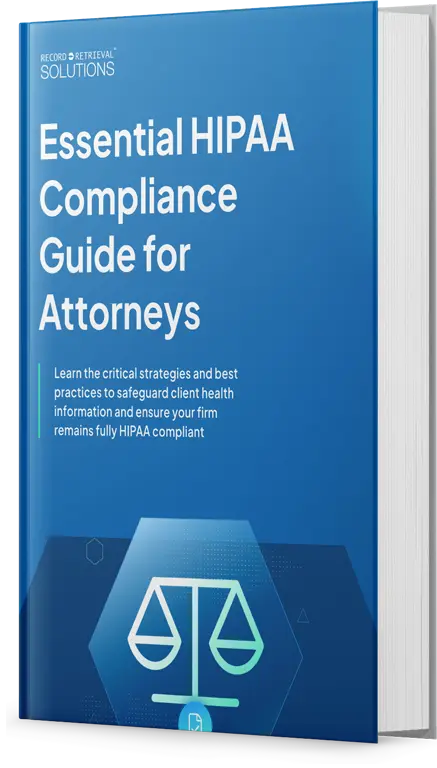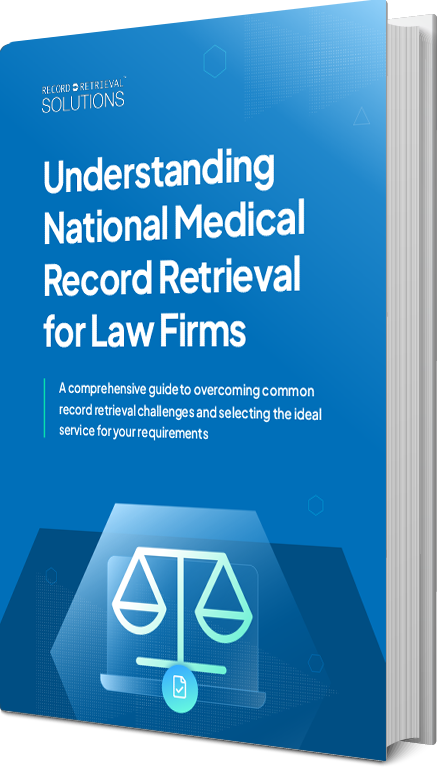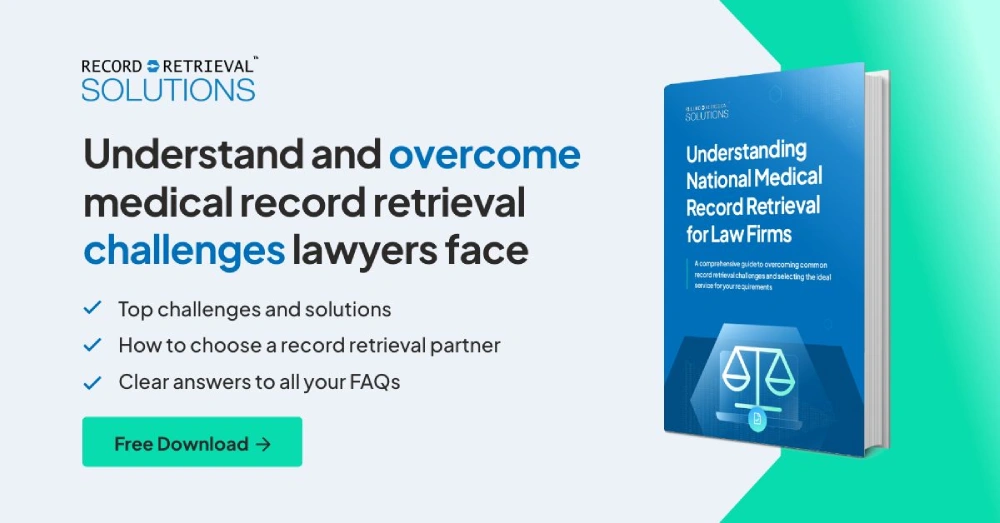Accurate medical records ensure quality care and protect patients from harm and legal complications. However, mistakes in healthcare documentation are more common than one might think.
They range from minor discrepancies to significant inaccuracies that can influence patient treatment. The ramifications of these errors extend beyond individual patient care and can jeopardize entire legal proceedings, especially in personal injury cases.
This article explores the steps in correcting errors in healthcare records, delving into the legal implications, procedural approaches for healthcare providers, and patients’ responsibilities. By prioritizing accuracy, we can safeguard the integrity of medical records and the quality of patient care.
Understanding the Importance of Accurate Healthcare Records
Accurate healthcare records are the bedrock of patient safety and care. They are vital for preventing medical mishaps such as misdiagnoses, wrong allergy details, and dangerous medication interactions.
When records contain errors, the patient’s health is put at risk, and routine administrative tasks—like billing or distributing lab results—can also go awry due to simple inaccuracies like wrong contact information.
Despite the cutting-edge nature of electronic health records (EHRs), it’s alarming that nearly 70% harbor incorrect data, making this a critical ongoing concern for data integrity. Around 23% of individuals perusing their online medical records spot errors and seek to amend them, underscoring how widespread such inaccuracies are.
Beyond the immediate risks to medical care, these records serve as vital legal documents. In the face of legal action, precise and complete patient records underpin the defense, establishing the standard of care provided. In this context, rectifying any mistake is as much a matter of sound healthcare delivery as legal prudence.
Frequency and Types of Patient-Reported Mistakes
The integrated landscape of healthcare hinges on the accuracy and precision of medical records. A startling finding from a study encompassing feedback from over 22,000 patients reveals that more than 20% have spotted potential mistakes in their healthcare visit notes.
Alarmingly, about 40% of these perceived errors are deemed serious by the patients who find them. This becomes even more pronounced among older patients and those in poorer health, with these demographics being twice as likely to report serious errors compared to their younger, healthier counterparts.
These patient-reported mistakes are not trivial. They can be pivotal in averting medication errors, preventing delays, and reducing unnecessary diagnostic tests and procedures—issues plaguing 25% to 30% of severe medical cases.
Despite the rights provided by the Health Insurance Portability and Accountability Act for patients to review their records, systematic examination of clinical notes for inaccuracies is not a widespread practice.
Among the reported errors, communication mishaps stand out, occurring when events are misrepresented or misunderstood. Addressing these issues is crucial in enhancing patient safety and the integrity of healthcare delivery.
Patient Perception | Details |
Serious Errors | Identified by 40% of those noticing mistakes |
Vulnerable Groups | Older and less healthy patients are more at risk |
Impact | Potentially increases medical severe errors by 25%-30% |
Error Type | Commonly included communication errors |
As guardians of healthcare information, recognizing the types and frequency of errors is crucial in reinforcing the trust and safety of patient care.
Legal Implications of Modifying Medical Records
It is crucial to sign and date any amendments to ensure traceability and maintain the standard of care for medical documentation. State laws typically advocate for corrections over erasures, guaranteeing that the original entry remains visible and attributed.
The transparent and secure correction process is particularly critical with electronic health records (EHRs), where an audit trail must mark any amended data while preserving the original information.
In a healthcare system where accuracy is paramount, each party, from the healthcare institution to the individual healthcare provider, must employ best practices for record correction, adhere to ethical standards, and ensure the reliance and trustworthiness of the healthcare records they maintain.
Procedural Steps for Healthcare Providers
Addressing errors in patient records necessitates a meticulous approach to ensure precision and uphold the sanctity of healthcare documentation. Healthcare providers must adhere to a definitive protocol when correcting any identified mistakes.
Once an error has been flagged, the healthcare provider must correct it to keep the original record intact. This is typically achieved using an annotation or addendum that refers to the incorrect entry.
The amendment process must preserve an indelible trace of the original error and the corrected information. This twin documentation serves as a safeguard, providing an apparent historical reference that upholds the integrity of the healthcare record and supports the continuum of care.
Moreover, prompt and written responses are paramount when patients proactively request an amendment to their records. Within a reasonable 60-day window, healthcare providers must address the patient’s request and nestle it within the permanent medical record.
In scenarios where partial agreement is reached regarding a patient’s proposition, the agreed-upon amendments must be visible on the record. Moreover, it is incumbent upon the provider to relay these alterations to other health professionals or organizations that may have been privy to the original record.
Responding to Amendment Requests
The Health Insurance Portability and Accountability Act (HIPAA) upholds patients’ right to request modifications to their medical records; consequently, healthcare providers are legally bound to consider these submissions.
Whether acceding to or repudiating the request, the provider must do so within the HIPAA-established boundaries. They must react promptly and commensurately with HIPAA’s stipulations or risk potential financial ramifications.
Therefore, healthcare providers must have ironclad policies that articulate the process of responding to medical record amendment requests. Crucial to this endeavor is the need for comprehensive staff training on HIPAA requirements to ensure that amendment requests are processed with an unerring sense of urgency and accuracy.
Transparent and orderly documentation of the entire amendment request process is non-negotiable. From the moment an amendment request is flagged to the eventual closure of the query, meticulous documentation is the sine qua non for compliance and quality control.
When a provider rejects an amendment request, the delineation of rights must be crystal clear—the patient is empowered to submit a Statement of Disagreement, which is then mandated to be part of their healthcare record, thus ensuring the patient’s voice is not stifled.
Reviewing Records for Accuracy
Medical records are significant legal instruments that could be summoned in legal and regulatory domains.
Healthcare systems frequently leverage technology to improve patient engagement, offering patient portals for easier access to medical records. However, patients retain the right to procure hard copies of their records, even if this necessitates a nominal service fee.
Responding to Amendment Requests
When responding to amendment requests, healthcare providers should proceed with meticulous attention to detail and adherence to the standards of care. It’s crucial to engage promptly upon receipt of a patient’s request to amend their medical record.
A provider must:
- Acknowledge the request within a reasonable period, as specified under HIPAA regulations.
- Review the amendment request thoroughly, alongside the original entry in the medical records, and evaluate its validity.
- Ensure that all staff involved are trained and well-versed in handling such requests in compliance with healthcare systems policy and HIPAA requirements.
- Utilize an electronic health records (EHR) system’s audit trail feature to document the review process and any actions taken.
In case of denials:
- Inform the patient of the decision and provide a plain language rationale.
- Allow the patient to submit a Statement of Disagreement.
- Include the statement in their file to maintain transparency.
Clear, transparent communication with the patient or their representative throughout the process fortifies trust and upholds the healthcare institution’s commitment to patient-centered care and regulatory compliance.
Reviewing Records for Accuracy
Healthcare workers understand the importance of meticulous medical records. They are not only the backbone of patient care but also serve as binding legal documents. Streamlining the process of correcting errors is paramount to ensuring accuracy.
Here’s how to do it right:
- Identification of Errors: Common discrepancies may range from personal details to diagnostic annotations. Scrutinize records for any such inaccuracies that could hinder care or legal integrity.
- Clear and Concise Requests: When pinpointing errors, be precise. Detail the incorrect entries and substantiate your claims with copies of the relevant record sections.
- Provider Communications: Reach out to healthcare providers efficiently. They should accommodate rectifications within a reasonable period.
- Utilization of Patient Portals: Technological advancements like patient portals expedite accessing and reviewing personal records. These innovative platforms are frequently part of a healthcare organization’s system.
- Formal Amendments: If an error persists, draft a Statement of Disagreement. This forms part of the original record, reflecting your proactive engagement.
Remember, your right to amend records is protected, and healthcare providers must uphold the standard of care in maintaining these documents. Lean on us to navigate this process effortlessly, ensuring the integrity of your medical records at all times.
Patient Responsibilities in Reported Errors
Patients play a pivotal role in safeguarding the accuracy of their medical records. Upon reviewing their medical records, individuals should vigilantly check for any discrepancies that might influence their healthcare outcomes.
If inaccuracies are uncovered, patients can request corrections; such engagement is a hallmark of a well-informed and proactive healthcare participant.
Errors in patient records often sprout from miscommunications with care providers. Hence, it is paramount for patients to foster clear dialogue with their health professionals, an act that reverberates with their commitment to receive high-quality medical care. By reporting potential errors, patients add their voices to a collective endeavor to hone a healthcare system that prizes safety and precision.
In a nutshell, patients must verify crucial personal information such as contact details and medical history.
Formal Request Process for Amendments
Here is an outline of the formal request process:
- Written Request:
- The patient submits a signed amendment request.
- Clear identification of the incorrect entry is necessary.
- Provider’s Response:
- Respond within 30 days to the patient.
- Notify the patient upon refusal to amend.
- Correction Protocol:
- Maintain the integrity of the original entry.
- Supplement the record with the amendment.
- Provider’s Policy:
- Establish and disseminate a comprehensive amendment policy.
- Train all health professionals in HIPAA compliance.
Understanding Provider Obligations
As stewards of such critical information, providers must adhere to HIPAA regulations, which stipulate a 60-day window for informing patients whether amendment requests are accepted or denied.
Should a correction be warranted, and it often is, the provider must amend the EHRs, ensuring the update signifies an alteration has been made. All related parties must be promptly apprised of any changes to ensure consistency across the healthcare spectrum.
Discrepancy Handling Procedures
For tangible paper records, a best practice is to line through incorrect entries—ensuring legibility—and then notate the correct information nearby. This method ensures that the history of corrections remains visible.
When dealing with electronic records, these adjustments are flagged within the system, providing a clear indicator of amendments while ensuring that the original, unaltered record can still be retrieved if needed.
A patient’s request for an amendment to their medical records is their undeniable right, triggering an obligation for providers to review and act on these requests within the stipulated timeframe.
Denial of Amendment Requests
If a healthcare provider denies an amendment request, they must do so with a complete and clear explanation. Communication errors can perpetuate misunderstandings; therefore, the reasoning presented should be in plain language, ensuring the patient can comprehend the rationale behind the refusal. Failure to comply with the medical record amendment procedures may result in a HIPAA violation, potentially incurring substantial fines or legal action.
Patients can articulate their perspective through a Statement of Disagreement if their request is denied. Subsequently, this statement is attached to their health records, maintaining a record of the patient’s position. Healthcare providers must respond to amendment demands with due diligence under the compliance timeline.
It is worth emphasizing that outstanding medical bills cannot hinder requests to amend medical records; providers can neither deny an amendment nor access to records due to unpaid medical care. However, healthcare organizations are permitted to charge nominal fees for the reproduction and postage of these records to the patient or their representative.
The Impact of Medical Record Errors in Personal Injury Cases
In personal injury law, the accuracy of medical records is paramount. These documents form the bedrock of a client’s case, substantiating claims to injuries sustained and treatments required.
However, when errors infiltrate these records, they introduce a chaotic element that can unravel even the most seemingly straightforward case. The impact is multifaceted, affecting the legal strategy and the client’s well-being.
Each incorrect entry, be it a misreported symptom or a mishandled diagnosis, opens the door to complications that could severely preclude seeking justice and appropriate therapeutic measures. This challenge requires vigilance and a thorough understanding of the interplay between medical documentation and legal recourse.
Undermining the Severity of Client’s Injuries
Consider this: a simple typographical error in the medical record changes the diagnosis from a compound to a simple fracture.
Such an error could grievously undermine the perceived severity of your client’s injuries. The ripple effects of this mischaracterization could lead to a diminished valuation of the injury and, by extension, decreased compensation.
Since personal injury cases hinge on the precise nature and extent of harm endured, ensuring the integrity of medical records is not just advisable but imperative.
Casting Doubt on the Cause of Your Client’s Injuries
Medical records are often consulted to establish a health event and causation timeline. An error that inaccurately records the incident leading to the injury can poison the well of evidence—from which your case draws.
Should the medical record erroneously indicate that a client’s condition stems from a pre-existing issue rather than the incident in question, it opens a pandora’s box of liability debates.
The defendant may seize this discrepancy to shirk responsibility, leaving your client’s rightful claim on shaky ground.
Leading to Incorrect Treatment Recommendations
Accuracy in medical records is a legal necessity and a clinical one. An incorrect entry can mislead healthcare professionals, leading to misguided care recommendations that range from inefficient to dangerously inappropriate.
For instance, downplaying a concussion as a ‘minor headache’ in medical documentation could result in the oversight of essential imaging tests or the neglect of critical monitoring.
Such lapses can exacerbate the patient’s condition, ultimately impacting their quality of life and the scope of legal reparations for medical negligence.
Legal Implications of Medical Record Errors
The legal ramifications of errors in medical records are far-reaching and can significantly sway the outcomes in personal injury cases. Imprecise records can cast aspersions on a plaintiff’s credibility, influence the damages awarded, and potentially lead to a claim’s wrongful denial. This situation puts victims at a disadvantage, invalidating their genuine experiences due to clerical inaccuracies.
This underscores the necessity for stringent review processes and record rectification, safeguarding not only the integrity of the medical practice but also the judicial pursuit of redress for wronged parties.
Identifying Medical Record Errors for Personal Injury Lawyers
Identifying errors in medical records plays a pivotal role for personal injury lawyers. These records can contain critical evidence that underpins or undermines a client’s case.
To ensure that justice is served, lawyers must be vigilant in spotting inaccuracies that can change the dynamics of a case.
Here’s how to uncover the best answers from clients:
Client Review During Initial Consultations
The initial client consultation is more than just a formal meet-and-greet session. It’s a prime opportunity for personal injury attorneys to glean valuable insights from their clients about the nature of the incident and the resulting injuries.
This first-hand information serves as a benchmark to verify the accuracy of medical records. A discrepancy between the client’s account and the medical documentation is a red flag that warrants further investigation.
Requesting and Reviewing Complete Medical Records
Acquiring the complete medical record from relevant healthcare providers is critical to establishing the attorney-client relationship. Errors can hide in plain sight within the complexities of healthcare documentation.
Looking for Inconsistencies, Missing Information, or Illogical Entries
Scrutiny is the watchword when it comes to analyzing medical records. Personal injury lawyers should meticulously examine the documents for inconsistencies, such as different injury descriptions, missing information crucial to the timeline of medical care, or illogical entries that defy medical reasoning. A thorough audit may involve tracking an entire healthcare journey—from the emergency room to discharge summaries. We advocate for clear communication and transparency, as these records are scrutinized and any errors are brought to the foreground.
Consulting with Medical Experts for Complex Cases
The expertise of a healthcare professional can be invaluable in complex personal injury cases that involve extensive medical treatments or procedures. Expert personal injury lawyers, paired with a diligent review process, are the bulwarks against medical record errors that can skew the outcome of a legal action.
Clinical Significance of Accurate Information
Protocols exist for meticulously correcting these errors, building on healthcare providers’ standards of care, and safeguarding continuity of care. These protocols mandate preserving the original record while amending inaccuracies, ensuring that the audit trail remains transparent and the patient record is both reliable and complete.
- Patient Safety: Avoiding diagnostic errors and unsafe treatments
- Legal Efficacy: Serving as a robust legal document
- Continuous Care: Ensuring information accuracy for ongoing medical care
- Professional Accountability: Holding health professionals to a high standard.
Risks Associated with Erroneous Information
Erroneous information in patient records is not just a minor inconvenience—it poses substantial risks that can profoundly affect patient care. Consider these alarming statistics: approximately 70 percent of medical records contain mistakes, with the potential to precipitate misdiagnoses, incorrect allergy data, and precarious medication interactions. The consequential hazards can range from serious injury to a fatal outcome.
Particularly at-risk are the older and sicker patients, who are twice as likely to encounter severe errors in their records as compared to their younger, healthier counterparts. This highlights a discernible vulnerability within a sensitive demographic that should be protected with utmost vigilance.
Interprofessional Team Interventions for Improvement
A robust interprofessional team approach, integrating the expertise of accreditation agencies, clinicians, and healthcare administrators, is paramount in addressing systemic deficiencies that contribute to medical errors. The goal is to ensure the modification of healthcare practices that lead to safer patient outcomes.
Nursing Work Environments: Healthcare organizations must prioritize restructuring nursing work environments. We can mitigate nursing fatigue by addressing factors such as insufficient facilities, extended duty hours, and heavy workloads, which are vital contributors to clinical errors.
IOM Recommendations: The Institute of Medicine advocates against prolonged work without rest for nurses. Shift lengths must be monitored to prevent fatigue-related errors, which can be as severe as those associated with alcohol impairment.
Patient Engagement: Empowering patients with easy access to their healthcare notes and records is transparent and strengthens the accuracy of medical records. This practice enhances healthcare safety and fosters trust and collaboration between health professionals and patients.
Key Interventions:
- Review and revamp nursing schedules
- Implement fatigue management programs
- Open channels for patient access to medical information
Accessing Patient Records
Accessing your medical records is a right and a proactive step towards managing your healthcare. Most healthcare systems now provide convenient patient portals to access your documents online effortlessly. Remember, HIPAA regulations safeguard your right to your medical records, regardless of any outstanding bills for medical care.
When you request copies of your records, be aware that there might be a nominal fee for copying and mailing costs. It’s crucial to review your documents periodically to ensure accuracy; spotting an error early makes correction simpler. However, remember that locating records over 20 years old can be problematic. Practices change hands, professionals retire, and documents can be archived in challenging ways. Persistence is key.
Risk Management in Healthcare Documentation
Proper documentation is the keystone of risk management in healthcare. Medical records are essential for accurate diagnosis and treatment, making the preciseness of such documents a cornerstone of patient safety. Even the slightest error may translate into a high-stakes scenario, potentially leading to the treatment of nonexistent conditions and posing grievous consequences.
Risk Management Checklist:
- Verify Accuracy: Regularly review records for completeness and correctness.
- Document Transparently: Log errors and corrections while maintaining the original content.
- Handle Timely Revisions: Correct mistakes promptly before claim submissions or audits.
- Educate and Train: Ensure staff understand proper documentation and correction procedures.
- Utilize Secure Platforms: Leverage electronic health records to track changes responsibly.
Conclusion: Prioritizing Accuracy in Patient Care
The accuracy of patient records is paramount in the complex labyrinth of healthcare systems. Statistically, over half of electronic health records contain discrepancies, particularly regarding medications, which has significant implications for patient care. This fact alone highlights an urgent need for meticulous oversight and correction protocols.
Healthcare providers must embrace patients’ crucial role in reviewing and refining their medical records. By doing so, data quality and patient-provider communication are improved, ultimately enhancing the standard of care.
Older people or those managing multiple health issues deserve meticulous attention, as their records often report serious errors. Protecting them and others from misconceptions that can alter medical care must be a priority for every healthcare provider and organization.
Retaining original entries in the face of corrections is not just best practice; it is a legal mandate that ensures transparency and creates a reliable audit trail for future reference.
Finally, patients’ rights to accurate records are affirmed through their ability to request amendments. While healthcare providers reserve the right to deny these changes, their responsibility to acknowledge and respond aligns us with a fundamental commitment to transparency and quality in healthcare.
FAQs
Can a medical record error affect my personal injury case?
Yes, medical record errors can significantly impact your personal injury case. Inaccurate records may weaken your claim by casting doubt on the severity of your injuries, potentially reducing the compensation you could receive.
What medical record errors are most important in a personal injury case?
Critical errors include:
- Incorrect injury descriptions.
- Wrong treatment dates.
- Misrepresentation of pre-existing conditions.
- Missing records of necessary treatment.
- These mistakes can undermine the credibility of your injury claims.
How do I prove a medical record error in a personal injury case?
To prove a medical record error, get a copy of your records, consult with your doctor about the mistake, and gather supporting evidence such as second opinions or test results. Expert testimony can also help clarify the significance of the error in some cases.
What steps should I take to correct an error in my medical records after a personal injury?
Request a written correction from your healthcare provider, providing supporting evidence where necessary. Follow up to ensure the records are updated and document all communications throughout the process.







